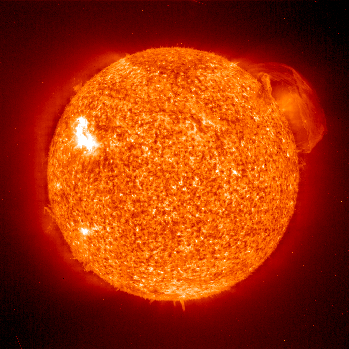
This filament was observed during July and August of 1997, at a time when the sun was fairly inactive, thus it stands out all the more. Up until 26th August it can be seen to grow as it moves across the sun, before erupting on the 27th. My images deal primarily with the week leading up to this.

Here are a few pictures of the filament. On the left is a helium-1 picture (see main page for explanation), and it is clear that the image looks similar to that of a hydrogen-alpha line. Next is a magnetogram image, showing the strength of the magnetic field, white spots being positive field, and black spots negative. After that is an x-ray image from the yohkoh spacecraft, and far right an extreme ultra-violet image taken from the SOHO spacecraft. At this resolution, it is difficult to pick out any major features in the magnetogram image (see later images), however, for the x-ray and ultra-violet images there ARE bright points, just not where our filament is, in fact, if anything, there is a darker area around the position of the filament.
Click on the thumbnails to enlarge.
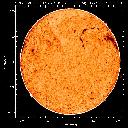
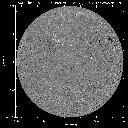
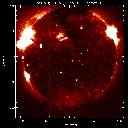
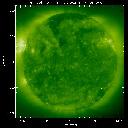
Here, I have managed to overlay the magnetic field contours on top of hydrogen-alpha images. The red contours are negative and yellow ones positive. Clicking on the small image will enlarge it, as usual. Now, with a close-up image of the magnetic field it is fairly easy to make out that the shape of the filament in general curves around an area of predominantly negative field. It seems to generally be along the line of neutral field, but it is difficult to pick out much more. The idea was to try and see what happens where the filament connects together. Look for yourself to see if you can pick out what is happening to the magnetic field! The field is a lot clearer for the next filament (September 1997)
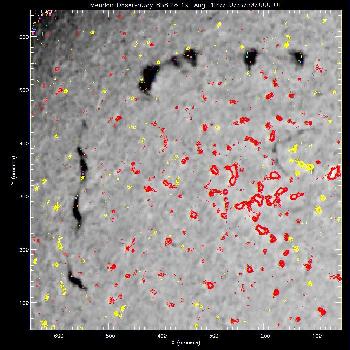
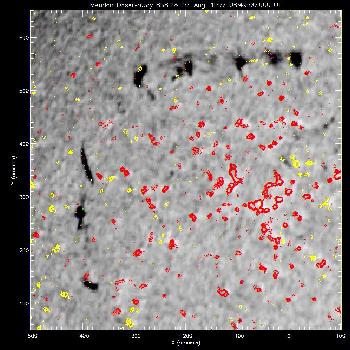
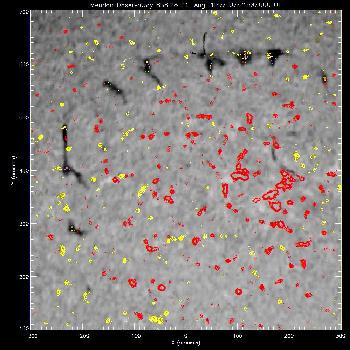
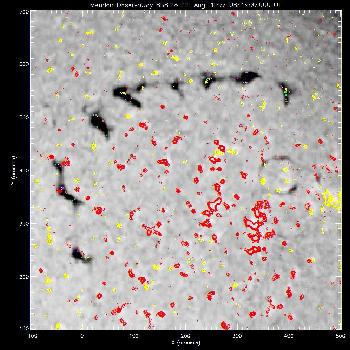
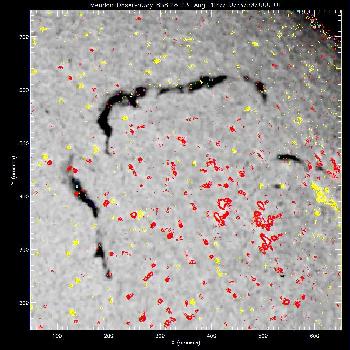
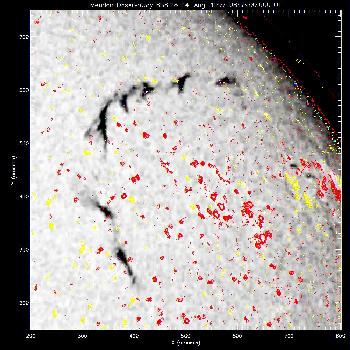
This filament was clearly visible a full solar rotation previously, and so I have images of the filament when it was in earlier stages of formation, before it goes out of view. If only we had a satellite (or link-up of them) that could study all sides of the sun at all times! Anyway, the image below shows the same overlay format, from just a couple of days before the filament left our field of view(basically, the end of July, start of August 1997). As far as I can see, the same general structure to this image exists, as compared to those of nearly a month later. It appears that the magnetic field is a little more random, and less clearly structured than when the filament is close to eruption. This is, after all, the early formation of the filament. Click here for the full set of earlier images.
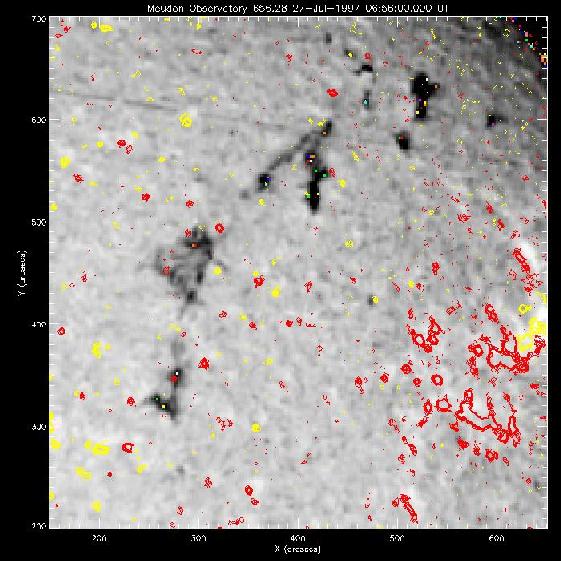 |
One of the first things I did was to make a movie of the magnetic field progressing over a period of a few days. This movie tracks part of the magnetic field for about 4 days, and you can see (especially by slowing the movie down) individual elements of the field growing, and then cancelling each other out in places. It helps to remember the general shape of the filament, as seen in all the other images, and look at the magnteic field in those areas. You can see pieces of positive and negative field move together and cancel out if you look carefully. It IS difficult to get a clear idea of what's happening here though. Maybe it takes someone with a better overview than me to really appreciate what's happening.

| This is the best picture I can find of the eruption. You can see on the north-west (i.e. top-right) of the picture where the prominence is rising into the corona. Click to enlarge. | 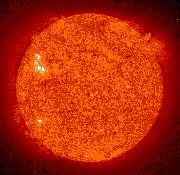 |
Okay, here's a movie I've made from 22nd-23rd August 1997, showing the magnetic field fairly clearly. I have put arrows on the images pointing out where there is an obvious bit of flux cancellation. The area I had in mind is about a centimetre past the arrow head. If you slow the movie right down (using the step function is the best of all) you can see the cancellation, and from the two ovrlayed h-alpha contours you can see it is in an area where the filament has joined up.

This is a picture of the eruption of the filament, it's a real beauty. Thanks to Piet Martens for finding this for me.
